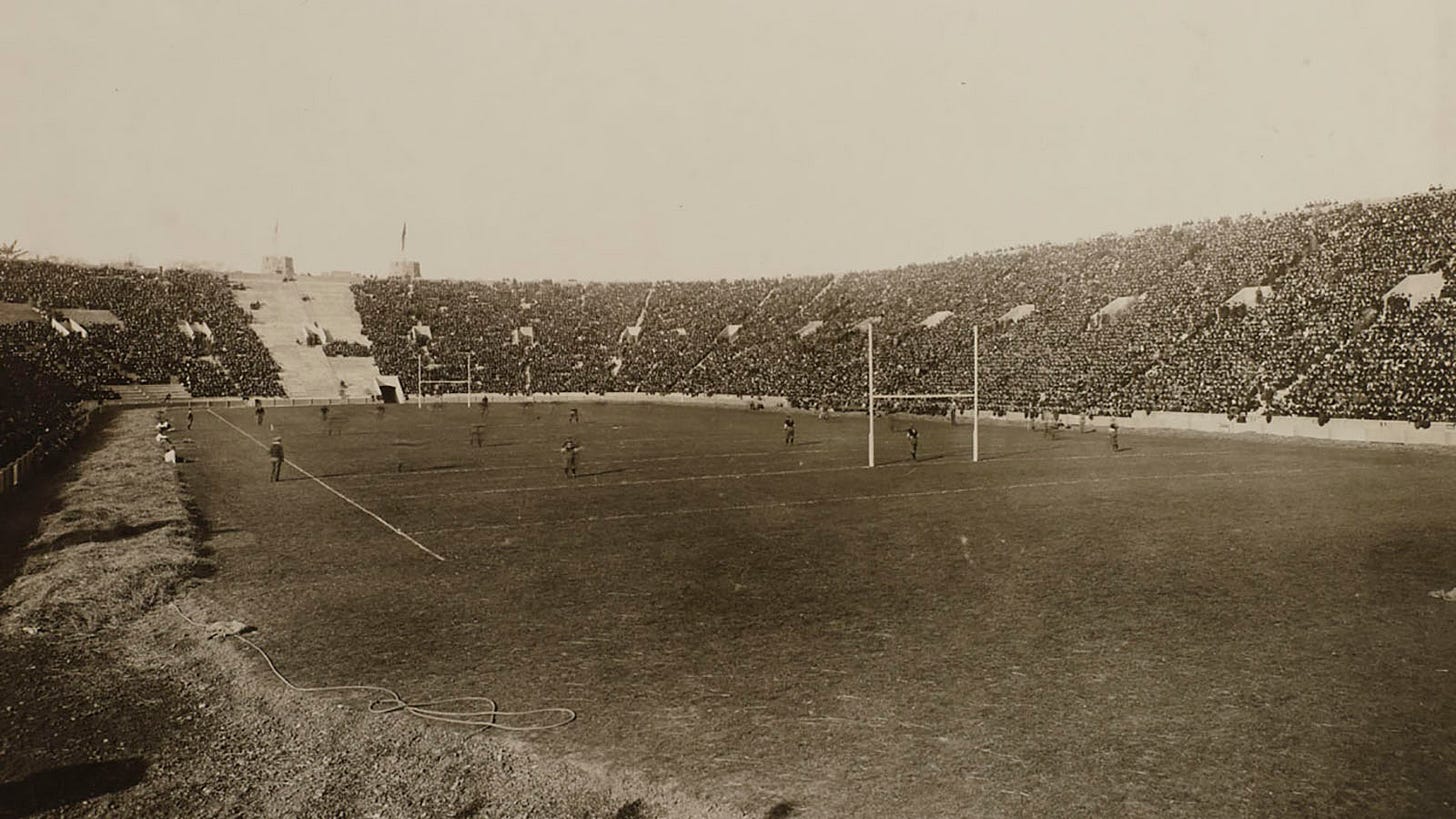Today's Tidbit... The Case Of The Missing Goal Posts
Football's origin story is that Princeton and Rutgers played the first game in 1869. That game involved 25 players per side kicking and batting a round ball with the ultimate aim of kicking the ball between two posts at either end of a field at Rutgers. The teams met again a week later on a Princeton field with goals at either end.
The proximity of the schools encouraged them to keep playing over the years. Princeton leads the series 53-7-1, though Rutgers went 10-3-1 from 1968 to 1980. During the late 1960s and early 1970s, the schools developed a tradition of sorts in which the winning team's fans tore down the goals posts regardless of where they played the game. Unfortunately, on several occasions, the fans started the teardown process before the game ended.
In 1974, the teams played an evenly matched season-opening game at Princeton's Palmer Stadium. Neither team scored in the first half, and Rutgers' only score came on a 94-yard punt return in the third quarter. As the clock ticked down in the fourth quarter, fans left the Rutgers section of the stands with a few minutes left and tore down the goal posts at the enclosed end of the horseshoe-shaped stadium. While those goal posts were falling, a smaller group of fans attacked the goal posts at the stadium's open end, and they soon dropped to earth as well.

The lack of goal posts would not have been a problem had Rutgers held onto the ball, but Princeton's defense held on fourth down with 3:49 left on the clock, turning the ball over to the Tigers' offense. Thus began a slow march downfield, culminating in a one-yard plunge by tailback Walt Snickenberger for a touchdown with 22 seconds on the clock, tying the score at 6-6.
As expected, Princeton wanted to attempt the extra point by kick, but neither goal post was still standing. Since the NCAA rule book did not have a clause covering what to do when both goal posts came down before the game ended, Tom Elliott, the referee, consulted with his crew and the head coaches on what to do next.
One suggestion was to leave the stadium and attempt the field goal on a nearby practice field, but not knowing the practice field location and being concerned with crowd control in that environment, Elliott rejected the suggestion. Princeton offered to have cheerleaders stand on one another's shoulders and hold a crossbar over the end line, but Elliott also rejected that idea.
The third option came when Princeton told Elliott they had another set of goal posts under the stands that could be "constructed" within 5 minutes. However, something was lost in translation, and Elliott understood the goal posts would need to be constructed from scratch, so he also rejected that option.
Finally, Elliott, reasoning that Princeton was the home team and responsible for stadium security, ruled that Princeton had to attempt a two-point conversion, so they did. A few moments later, Tigers' quarterback Ron Beible tossed a pass to Bob Harding, who was open in the end zone, but the ball went off Harding's fingertips and fell to the ground, and the game ended in a 6-6 tie.
A 1975 rule change required schools to have spare goal posts readily available at all games to ensure this situation would not arise again. Of course, events like the Rutgers-Princeton debacle encouraged the shift to teardown-resistant metal goal posts, so the issue has largely gone away in the nearly fifty years since both goal posts went missing.
Thanks to subscriber Mike Sencheski for the heads up on this story.
Football Archaeology is reader-supported. Click here to buy one of my books or otherwise support the site.


Wow! that is some story!
I wish they would have gone with the cheerleader pyramid thought. Lol